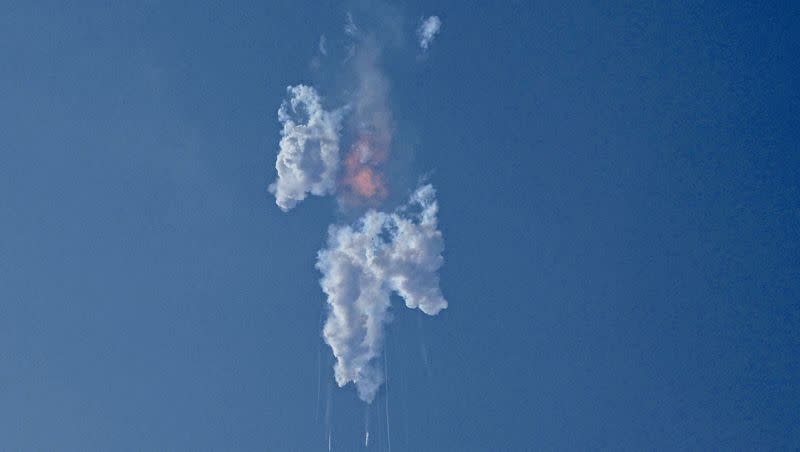What Elon Musk said about SpaceX Starship’s ‘rapid unscheduled disassembly’

- Oops!Something went wrong.Please try again later.
SpaceX’s massive Starship successfully lifted off from its south Texas launch pad Thursday morning but ran into trouble about four minutes into its debut flight when the rocket began tumbling briefly before being destroyed in an explosion.
SpaceX founder and CEO Elon Musk, who weeks ago gave the initial launch a 50-50 chance of success, still celebrated the brief mission in a tweet and noted the private space agency harvested valuable information from the effort.
“Congrats @SpaceX team on exciting test launch of Starship,” Musk tweeted. “Learned a lot for next test launch in a few months.”
Congrats @SpaceX team on an exciting test launch of Starship!
Learned a lot for next test launch in a few months. pic.twitter.com/gswdFut1dK— Elon Musk (@elonmusk) April 20, 2023
And SpaceX embraced its usual wry tone in its own social media postings after the Starship flight, which was scheduled to include a lap around the planet before splashing down in the Pacific near the Hawaiian islands.
“As if the flight test was not exciting enough, Starship experienced a rapid unscheduled disassembly before stage separation,” one SpaceX tweet read.
As if the flight test was not exciting enough, Starship experienced a rapid unscheduled disassembly before stage separation
— SpaceX (@SpaceX) April 20, 2023
SpaceX was poised to launch the rocket on Monday after receiving FAA approval on Friday, but the attempt was scrubbed due to a frozen pressure valve problem.
Under development for years, SpaceX’s 400-foot tall rocket is powered by 33 individual Raptor engines that, in unison, create nearly 17 million pounds of thrust. The methane-powered system dwarfs the current record held by NASA’s Space Launch System, which flew a successful test flight last November and can achieve almost 9 million pounds of thrust.
SpaceX describes Starship as “a fully reusable transportation system designed to carry both crew and cargo to Earth orbit, help humanity return to the Moon, and travel to Mars and beyond.” While Thursday’s unmanned test flight, had it been completely successful, was not going to include landing the components back on Earth, as SpaceX does with its workhorse Falcon 9 rockets, the Starship system is designed for return and reuse capabilities.
Related
SpaceX scrubs attempt to launch massive Starship rocket after technical glitch
Here’s a sizzle reel of NASA’s incredible year of accomplishments
Orion capsule back after 25-day journey as NASA inches closer to moon landing
Starship is capable of lifting as much as 250 tons into space and could accommodate 100 people on a potential trip to Mars, according to The Associated Press.
SpaceX has its own plans for putting the Starship to work once it becomes operational, ferrying satellites to low Earth orbit and potentially carrying paying passengers to space. But NASA is also vested in successful development of the giant rocket system, having struck a $2.9 billion contract with SpaceX in hopes of making Starship part of the Artemis moon mission. Starship’s upper stage spacecraft would be used to carry astronauts from lunar orbit to the surface of the Moon but the NASA contract stipulates that SpaceX must first prove its abilities by performing a successful unmanned lunar landing.

